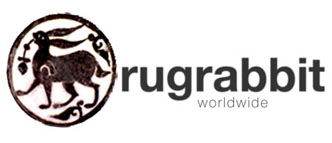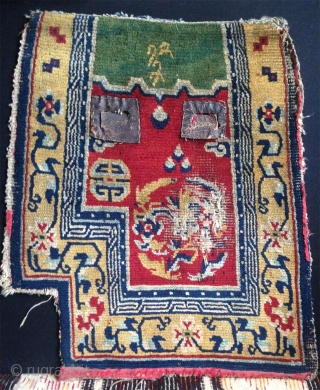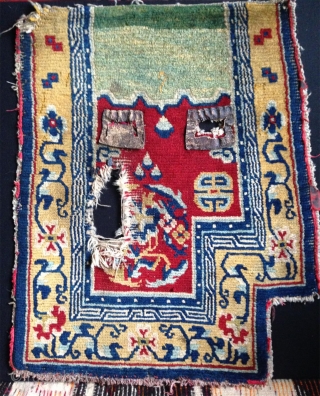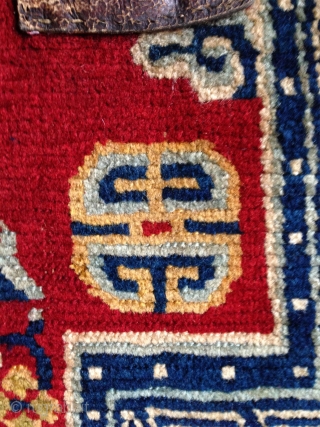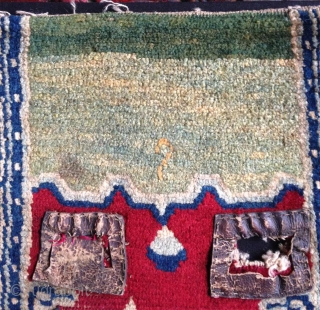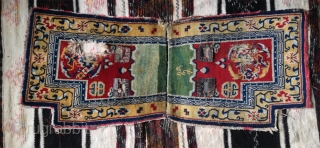Back
it is not only that it has a fantastic green center field but for many reasons this is a very special tibetan saddle rug. i had for many years only one half of it and recently i was lucky to acquire the other half. the colors are beautiful and very saturated, rarely the red the green and the yellow are seen with this intensity on this kind of weavings. few tibetan saddles show a goldish yellow border like here. if one carefuly examine the desgin it will appear that it has been extremely precisely executed. the fine greek key border is nicely elongated and change its direction exactly in the vertical middle axis at both ends. the curves of the floral border are harmoniously symetric. this kind of border is very old and is not originally borrowed from the chinese design as many people think, i think it is the opposit. it can been seen in xinjiang on 2-3000 years old artefacts. the medaillon design is somewhat reminiscent of liao era design.
the usually called shou design seen here also is not derivated from the chinese caractere shou which means longevity but is a very ancient symbol that can be traced to 6000 years back and has been slowly incorporated by the chinese from other culturs and gave to it their longevity meaning. a group of 3 flaming pearl and a bigger one just under the middle of the green field which bears the number one on one side and the 2 numbers 12 and 21 on the other side renforce also the idee that this saddle was intented to somebody of a special importance. it is finely woven with the best available tibetan natural dyes. note that the light rosa color used as outlining of the red in the border design is also derivated from a natural dye. this saddle dates at least from the middle of the 19th century.
price:
sold
- Home
- Antique Rugs by Region
- Category
- Profiles
- Post Items Free
- Albums
- Benaki Museum of Islamic Art
- Budapest: Ottoman Carpets
- Gulbenkian Museum
- Islamic Carpets. Brooklyn
- Islamic Textiles. Brooklyn
- Konya Museum: Rugs
- MKG, Hamburg
- MMA: Caucasian Carpets
- MMA: Mamluk Carpets
- MMA: Mughal Indian Carpets
- MMA: Ottoman Carpets
- MMA: Safavid Persian Carpets
- MMA: Turkmen Rugs
- McCoy Jones Kilims
- Ottoman textiles. Met
- Philadelphia Museum
- Rugs and Carpets: Berlin
- Seljuqs at the Met
- TIEM, Istanbul: Carpets
- V&A: Classical Carpets
- Vakiflar Carpets: Istanbul
- Baluch Rugs: Indianapolis
- Gallery Exhibitions
- Jaf an Exhibition
- Alberto Levi Gallery
- Andean Textile
- Christie's London: 2016
- Francesca Galloway
- HALI at 40
- ICOC Washington, DC 2018
- Jajims of the Shahsavan
- London Islamic Week April, 2018
- Mongolian Felts
- Navajo Rugs: JB Moore
- Persian Piled Weavings
- SF Tribal & Textile Art Show 2020
- SF Tribal 2019
- Sotheby's: C. Alexander
- Turkish Prayer Rugs
- Turkmen Main Carpets ICOC 2007
